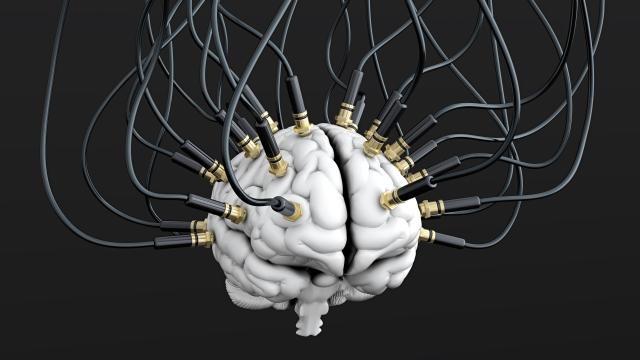It’s been a weird day for weird science. Not long after researchers claimed victory in performing a head transplant on a monkey, the US military’s blue-sky R&D agency announced a completely insane plan to build a chip that would enable the human brain to communicate directly with computers. What is this weird, surreal future?
It’s all real, believe it or not. Or at least the US Defense Advanced Research Projects Agency (DARPA) desperately wants it to be. The first wireless brain-to-computer interface actually popped up a few years ago, and DARPA’s worked on various brain chip projects over the years. But there are shortcomings to existing technology: According to today’s announcement, current brain-computer interfaces are akin to “two supercomputers trying to talk to each other using an old 300-baud modem”. They just aren’t fast enough for truly transformative neurological applications, like restoring vision to a blind person. This would ostensibly involve connecting a camera that can transmit visual information directly to the brain, while the implant would translate the data into neural language.
To accomplish this magnificent feat, DARPA is launching a new program called Neural Engineering System Design (NESD) that stands to squeeze some characteristically bonkers innovation out of the science community. In a press release, the agency describes what’s undoubtedly the closest thing to a Johnny Mneumonic plot-line you’ve ever seen in real life. It reads:
A new DARPA program aims to develop an implantable neural interface able to provide unprecedented signal resolution and data-transfer bandwidth between the human brain and the digital world. The interface would serve as a translator, converting between the electrochemical language used by neurons in the brain and the ones and zeros that constitute the language of information technology.
So DARPA wants to turn neural language into digital code, potentially opening up scenarios wherein the human brain can mainline data and people can talk to machines simply by thinking. Like having the internet inside your head — which would not be overwhelming at all.
[DARPA]
Image: Shutterstock
